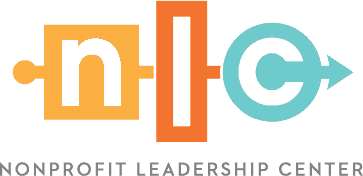We’ve all been there. A sales associate starts explaining their return policy before you’ve even had a chance to speak. A service provider begins promoting the latest product without knowing what you need. Or a medical professional makes assumptions about your health before asking you how you feel.
Customer service is about four simple words: How can I help?
As nonprofit professionals, excellent customer service is the lifeblood of any organization. Whether you are working with internal customers (colleagues and partners who depend on you for information or resources) or external customers (your constituents/clients, donors, corporate and community partners, and volunteers), how you treat your customers directly impacts your ability to achieve goals and sustain success.
While your mission statement tells the community why you exist, how you act and communicate tells the community who you really are. Mission-driven customer service is understanding your mission and doing all you can to serve your community. It’s not just asking how you can help; it’s authentically acting on it.
Let’s explore the actions that nonprofit organizations take when they prioritize mission-driven customer service.
4 Traits of Nonprofits That Prioritize Mission-Driven Customer Service
1. Works continuously to create a climate of customer service
As an organization, you intentionally define what customer service looks like, both internally and externally. Then, you set behavioral expectations to uphold the defined culture, including performance goals and reviews.
2. Makes employees aware of the importance of customer service
Through onboarding, training and ongoing coaching, you support your team members in providing excellent customer service. That includes prioritizing clear, concise and timely feedback.
3. Listens to feedback from those they serve — past and present
Leading with a service mindset starts by understanding what your customers — from donors and constituents/clients to coworkers — need. A mission-driven customer service environment encourages and allows for following up with current customers, asking questions or interviewing them to understand their perspectives and needs. It also means creating systems to track and check in on past donors, volunteers or partners to improve and build on your work.
4. Hires with customer service in mind
Seek candidates who have a track record of prioritizing customers’ needs first and clearly articulate your expectation of having a customer service mindset throughout the hiring process.
Enhance Relationships at Your Nonprofit
How staff handles internal and external stakeholders directly impacts your nonprofit’s ability to reach goals and achieve organizational success.
Join the Nonprofit Leadership Center on October 3 for an engaging half-day class in Tampa, Florida, to learn how to enhance relationships with your customers, even in the most challenging circumstances.
- ✅ Learn the benefits of excellent customer service.
- ✅ Understand how the service you provide reflects on your nonprofit’s mission
- ✅ Identify your customers — internally and externally.
- ✅ Develop techniques for responding to specific customer behaviors.
- ✅ Learn how to diffuse angry customers.
- ✅ Learn to turn problems into opportunities for customer satisfaction.


